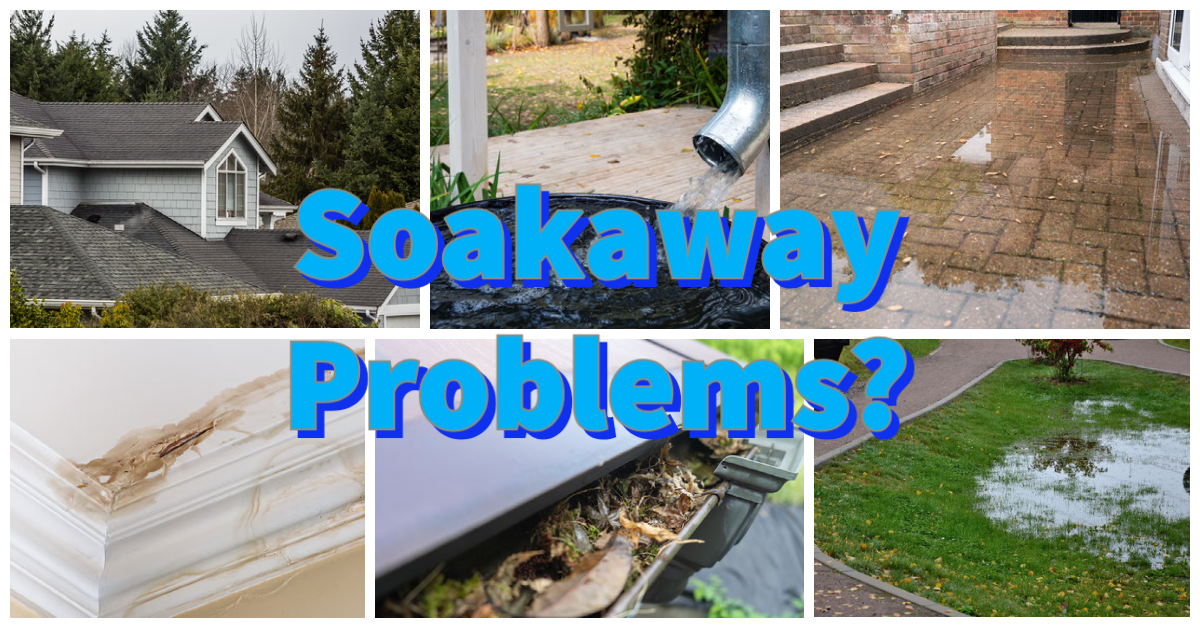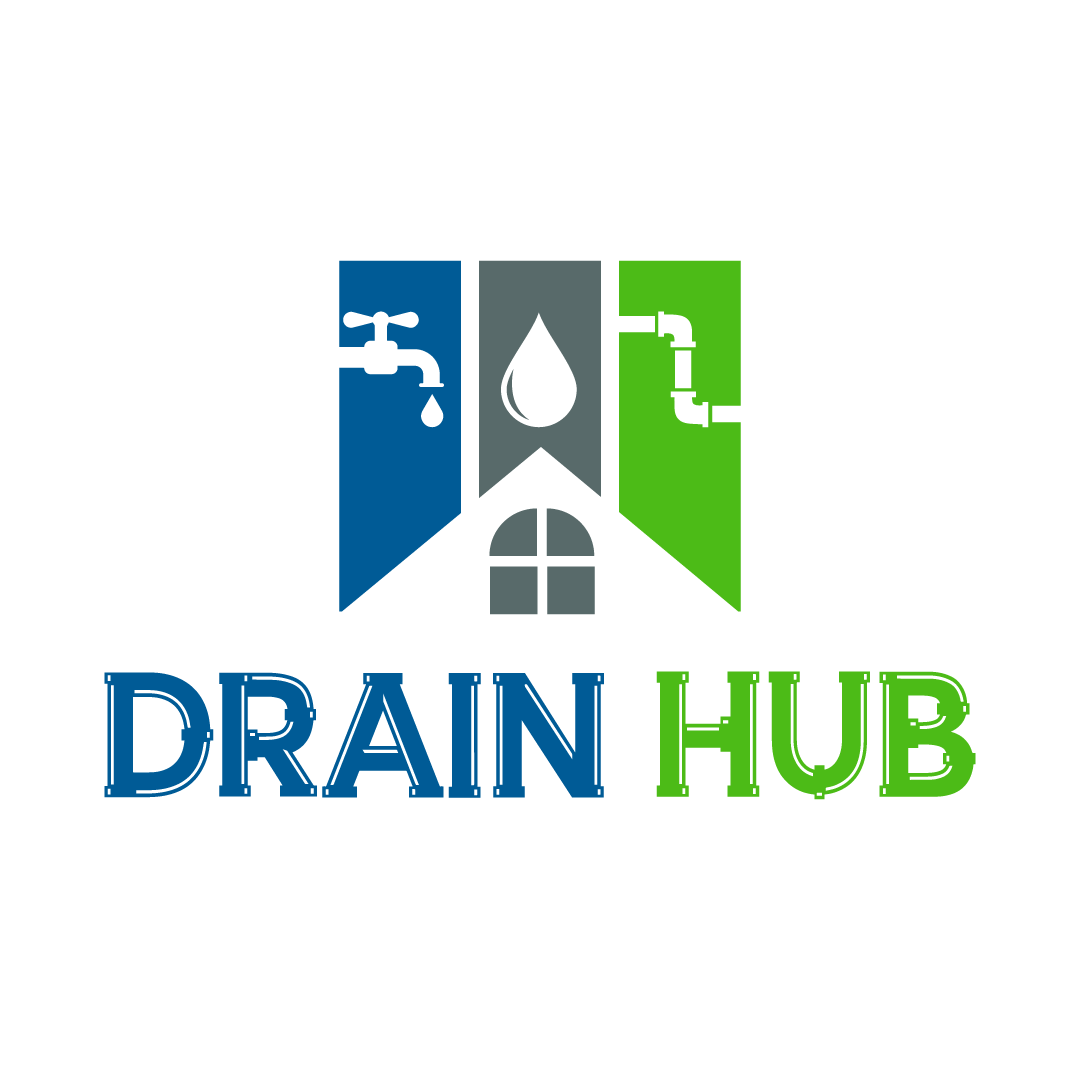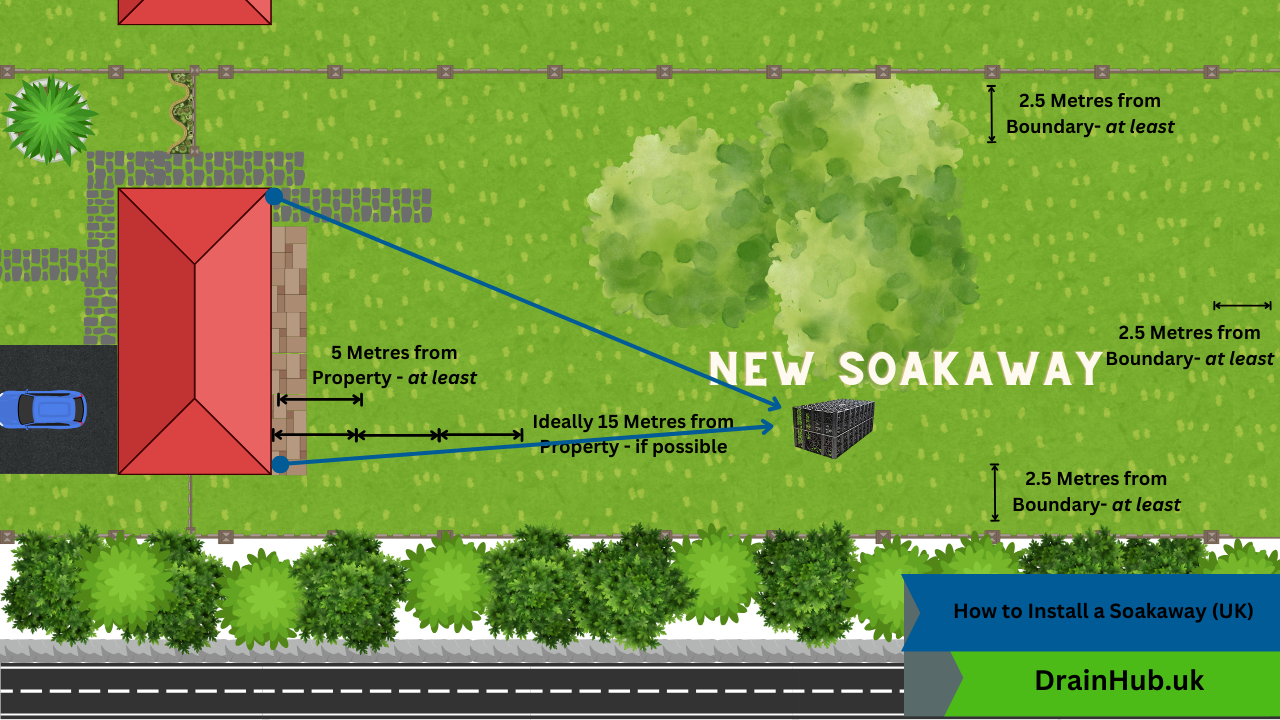Ever wondered where the water from your roof, gutters or floor gullies run to?
Realistically, depending on where you live in the UK, the age of your property and other factors, there are three end points for the rain water from your property:
Main Sewer
Quite often, rain water drains end up flowing into the nearest main sewer. Sometimes foul, waste or sewer chambers take down pipes or gullies alongside waste facilities such as kitchen drains, bathrooms, etc. Sometimes it joins after at some point.
This depends on the age of property, for example newer developments will have a specific rain water system to discharge into.
Watercourse
Some properties, particularly rural houses, will sometimes discharge directly into a stream, brook or river. It is vital that no waste, even a sink, ends up joining this.
Soakaway
Soakaways come in all shapes and sizes, and once again depends on the age of the property. Older properties usually have a gravel pit in the ground, not far from the source. Newer properties usually have a larger pit, sometimes in the form of just gravel and a membrane, or a “crate” system may have been used. These are designed to hold excess water and then discharge into the ground in a slow, controlled manner.
Commercial properties or larger developments may even have specialist tanks called attenuation tanks, to slow and control flow into soakaways or other destinations.
Ground
Quite often in built up places or where extensions have been made, or even older properties with plenty of land or space around it, will simply flow to ground. This may need changing with modern weather patterns, in which case a careful assessment would be needed.
Commercial properties or larger developments may even have specialist tanks called attenuation tanks, to slow and control flow into soakaways or other destinations.
What is a Soakaway and What Does it Look Like?

The chambers you can see above tend to be used on larger properties, especially commercial or industrial places. Flats will likely use these, too as they take up a larger footprint.
For houses, especially Victorian properties or houses built all the way up to the 1960’s, chances are your down pipes run to a gravel pit in the ground, either individually or or they converge into one (depending on where they are placed and on which side of the property.
Soakaways are a fundamental part of any drainage system where the rain water is kept separate from the sewer, or foul water and they are designed to manage surface water runoff and prevent flooding.
However, they can become problematic if not installed or maintained correctly. Soakaway problems are a common issue that can cause significant damage to properties, the environment and public health.
Common Soakaway Problems and Solutions
Common soakaway problems can include:
- Blockages
- Exhaustion
- Contamination
- Collapse
Blockages
Just like every other aspect of drainage, your soakaway can become blocked.
- Depending on the length from source to down pipe, it could be blocked between the two.
- If the pipe linking your down pipe, gully or other rain water drain is is blocked, you should be able to clear it, or get a professional drain company to clear it for you, without knackering the soakaway. Though it is best to try to retrieve the cause of blockage if possible, to prevent unwanted silt or leaves from getting to the soakaway.
- Roots: Since soakaways tend to be in gardens or greenspaces and usually fairly shallow, roots are a common problem. But just like other drainage systems, it should be fairly straightforward to remove them either by DIY or professional means.
Exhaustion
Just like us people, soakaways can become exhausted over time. In particular, gravel pit soakaways made up of 10mm pea shingle (and often rubble made up of old bricks) can become clogged with particulates from:
- Silt
- Mud
- Leaves
If the ground around the soakaway is no longer suitable, for example it’s often water logged or has excessive ground water, you may need to relocate it or join your rain water system to the foul or waste, with your local water authority’s permission.
A saturated soakaway is one that has become completely filled with water. This can happen when the soakaway is too small for the amount of water it needs to handle, or when the surrounding soil is no longer permeable enough to allow water to drain away.
Contamination
Over time, particulates from vehicles, residues from spilled chemicals, etc. can lead to your soakaway becoming contaminated. If you suspect this is the case, you should seek professional advice immediately.
Common causes can be:
- Fuel or oil leaks
- Waste entering from the property, such as a sink feeding into rain water drain
- Or even just water run-off from drive ways or roads where fumes leave their mark on the surface and standing water, over a long time making it’s way into the soakaway.
Collapse
I never like to use the word “collapse” when it comes to drains, as people tend to latch on to it and panic. There are several ways a collapse can impact a soakaway:
- If your soakaway is a crate system, leaving heavy vehicles or building structures that are heavier than they are rated for could cause them to deform or move in the ground.
- You could have a collapse in the pipe leading to the soakaway. In this case, dealing with the localised collapse shouldn’t affect the soakaway, as long as any debris from the collapse is removed from the affected area when repaired.
Over time, soakaways can become of no more use due to wear and tear or as a result of heavy rainfall over the property’s lifetime.
This can cause the soakaway to become less effective at draining water away, leading to pooling and flooding.
- Soakaway problems can lead to flooding, structural damage, and environmental contamination.
- Compliance with regulations and guidelines is crucial to prevent and address soakaway problems.
- Professional help may be necessary to assess, repair, or replace a soakaway.
Understanding Soakaways
A soakaway is a drainage system used to manage surface water runoff from roofs, driveways, and other hard surfaces. It is designed to allow water to percolate into the ground at a controlled (or slowed) rate, where it can be absorbed by the soil and vegetation.
A soakaway system typically consists of a pit or series of pits filled with a permeable material such as gravel or rubble. The pits are usually lined with a geotextile membrane to prevent soil from clogging the system.
The function of a soakaway is to manage the volume of water generated by hard surfaces, preventing flooding and waterlogging. The capacity of a soakaway system depends on a range of factors, including the size of the area draining into it, the permeability of the soil, and the depth of the water table.
To ensure that a soakaway system functions correctly, it is important to install it correctly and maintain it regularly. This may involve periodic inspection and cleaning to prevent blockages and ensure that the system is functioning at maximum capacity.
Perforations in the soakaway pit walls allow water to enter the system, but it is important to ensure that these perforations are not blocked by soil or debris. If the perforations become blocked, the system may fail to function correctly, leading to flooding and other problems.
In summary, a soakaway system is an effective way to manage surface water runoff from hard surfaces. By understanding how these systems function and how to maintain them, property owners can ensure that their soakaway systems are functioning correctly and providing effective drainage for their property.
Other Soakaway Problems
Bad Odours
A soakaway can start to give off bad smells or odours if it is prone to, or has a history of blockages and other issues. The smell itself is caused by a build up of organic matter such as leaves and silt breaking down and giving that distinctive “stagnant drain” smell. The gases produced can include methane, but not a problematic level. People sometimes mistake the smell for a foul, or sewer smell, but this is far less whiffy!
Filter Problems
Your soakaway may have a filter of some kind, depending on the type and complexity, as it helps to prevent debris from entering the system. However, if the filter becomes damaged or blocked, it can cause problems with the soakaway. The vast majority of household soakaways will not have a filter, as it would most likely get in the way or at the very least be overkill.
Soakaways can develop a range of problems over time, including blockages, damage, bad odours, saturation, and filter problems. But regular maintenance and care should prolong the lifespan of your rain water system.
Impact of Soakaway Problems on Environment
Soakaway problems can have a significant impact on the environment. When a soakaway becomes blocked or fails to function correctly, it can lead to a range of issues that affect the surrounding area.
One of the most significant problems is the potential for pollution. Soakaways are designed to filter rain water and allow it to seep into the ground, but through a combination of factors, the rain water can become contaminated with pollutants.
This can have a detrimental effect on groundwater and surface water, leading to contamination and potential health risks for humans and wildlife.
In addition to pollution, soakaway problems can also impact gardens and other green spaces. When a soakaway fails, it can lead to waterlogging, which can kill plants and damage the soil. This can have a knock-on effect on the wider ecosystem, as plants and soil play a vital role in supporting wildlife and maintaining biodiversity. Not to mention your garden or green space!
Signs of Soakaway Problems
When a soakaway is functioning properly, it should be almost invisible. However, when something goes wrong, it can cause significant damage and inconvenience. Here are some signs of soakaway problems that you should look out for:
- Waterlogged Ground: If you notice that the area around your soakaway is constantly wet or waterlogged, this is a clear sign that something is wrong. This could be due to a blocked drain, damaged drainage pipes, or an overloaded soakaway.
- Bad Odours: If you start to notice unpleasant smells emanating from your soakaway, this is a clear indication that something is wrong. This could be due to a build-up of organic matter, soil particles, or rubble in the soakaway.
- Slow Drainage: If your gutters or drains are taking longer than usual to empty, this could be a sign that your soakaway is not functioning properly. This could be due to a blockage in the drainage pipes or an overloaded soakaway.
- Soggy Lawns: If you notice that your lawn is particularly soggy or waterlogged, this could be a sign that your soakaway is not functioning properly. This could be due to compacted soil or permanent damage to the soakaway.
- Cracks in the Ground: If you notice cracks in the surrounding ground, this could be a sign that your soakaway is not functioning properly. This could be due to an overloaded soakaway or damage to the drainage pipes.
If you notice any of these signs, it is important to take action as soon as possible. Soakaway problems can cause significant damage to your property and can even lead to permanent damage if left untreated.
If you’re not sure if you even have a soakaway on your property and can’t work it out from the information you have, it could be worth paying a professional drainage company to carry out a CCTV survey to establish not only where the rain water runs to, but also to check the condition of possible soakaway and associated pipe work leading to it.
This could prevent some massive drainage problems in the future!
Looking to Replace Your Soakaway?
Frequently Asked Questions
How long should a soakaway take to drain?
The time it takes for a soakaway to drain depends on various factors, such as the soil type, the size of the soakaway, and the amount of rainfall. In general, a properly functioning soakaway should drain within 24 to 48 hours after heavy rainfall.
How to clear a blocked rainwater soakaway?
Clearing a blocked rainwater soakaway involves removing any debris or sediment that may be clogging the system. This can be done by using a high-pressure water jet or by manually digging out the blockage. It is important to identify the cause of the blockage to prevent it from happening again in the future.
Where can I find soakaway repair services near me?
Soakaway repair services can be found by searching online or in local directories. It is important to choose a reputable and experienced contractor who can assess the problem and provide an effective solution.
What are the signs of a failed soakaway?
Signs of a failed soakaway include water pooling around the drainage area, foul odours, slow draining water, and sinkholes or depressions in the ground. If you notice any of these signs, it is important to have your soakaway inspected by a professional.
How much does it cost to unblock a soakaway?
The cost of unblocking a soakaway will depend on the severity of the blockage and the method used to clear it. On average, the cost can range from £100 to £500.
What is the cost of replacing a soakaway?
The cost of replacing a soakaway will depend on various factors, such as the size of the area, the type of soil, and the materials used. On average, the cost can range from £1,000 to £5,000. It is important to have a professional assess the situation to provide an accurate quote.




Leave a Reply